Zeus and His Dysfunctional Family
11 Ares

Origins
The following content is adapted from Mythology Unbound and is licensed under a CC BY-NC-SA license.
Ares was the son of Zeus and Hera. He was one of the twelve Olympians, but was quite feared as a war god. He was the least popular among the Greeks and among his fellow gods due to his combative nature. The only one who seemed to like him was Aphrodite. The two were portrayed as having a long-standing affair, and they had four children together. He also had many children with mortal women from Thrace. He was the father of several of the Argonauts and of the Amazon queen, Penthesileia (see chapter 23).
Ares was primarily worshipped outside of Greece, particularly in Thrace and Scythia. In myth he was associated with the Amazons and the Colchians. The belt that Heracles steals from the Amazon queen, Hippolyte, during his ninth labour, was given to her by Ares (see chapter 17). The grove which held the Golden Fleece, the object of the quest of Jason and the Argonauts (see chapter 18), was sacred to Ares.
Ares in Action
Sections & Primary Sources
God of War
The following content is adapted from Mythology Unbound and is licensed under a CC BY-NC-SA license.
Despite being a war god, in Greek myths Ares was often bested by the other gods. Athena wounds him in combat during the Trojan War and Heracles manages to take him down four times while fighting at Pylus. The giants Otus and Ephialtes trap him in a pot and he is stuck there for over a year until Hermes rescues him.
One might wonder why Ares’ associations with war would hurt his reputation while Athena, a war goddess, was so popular. However, the Greeks viewed Ares’ bloodthirstiness as antithetical to their tactical style of warfare, exemplified by Athena.
However, Ares’ Roman counterpart, Mars, was a favourite of the Romans. They traced their lineage to him, as the father of Romulus and Remus by the Vestal Virgin, Rhea Silvia. Mars was the protector of the Romans and their patron god.
For further discussion of Mars and the foundation of Rome, see the following sections and chapter 32.
Homeric Hymn 8, “To Ares” (trans. H. G. Evelyn-White, adapted by P. Rogak)
Greek hymn, 7th century BCE
Ares, exceeding in strength, chariot-rider, golden-helmed, brave of heart, shield-bearer, saviour of cities, harnessed in bronze, strong of arm, unwearying, mighty with the spear, O defence of Olympus, father of warlike Victory, ally of Themis, stern governor of the rebellious, leader of righteous men, sceptered king of manliness, who whirls your fiery sphere among the planets in their sevenfold courses through the aether, in which your blazing steeds forever carry you above the third level of heaven; hear me, helper of men, giver of fearless youth! Shed down a kindly ray from above upon my life, and strength of war, that I may be able to drive away bitter cowardice from my head and crush down the deceitful impulses of my soul. Restrain also the keen fury of my heart which provokes me to tread the ways of blood-curdling conflict. Rather, O blessed one, give me boldness to abide within the harmless laws of peace, avoiding conflict and hatred and the violent fiends of death.
Taken from: https://www.theoi.com/Text/HomericHymns3.html#8
Art and Symbolism
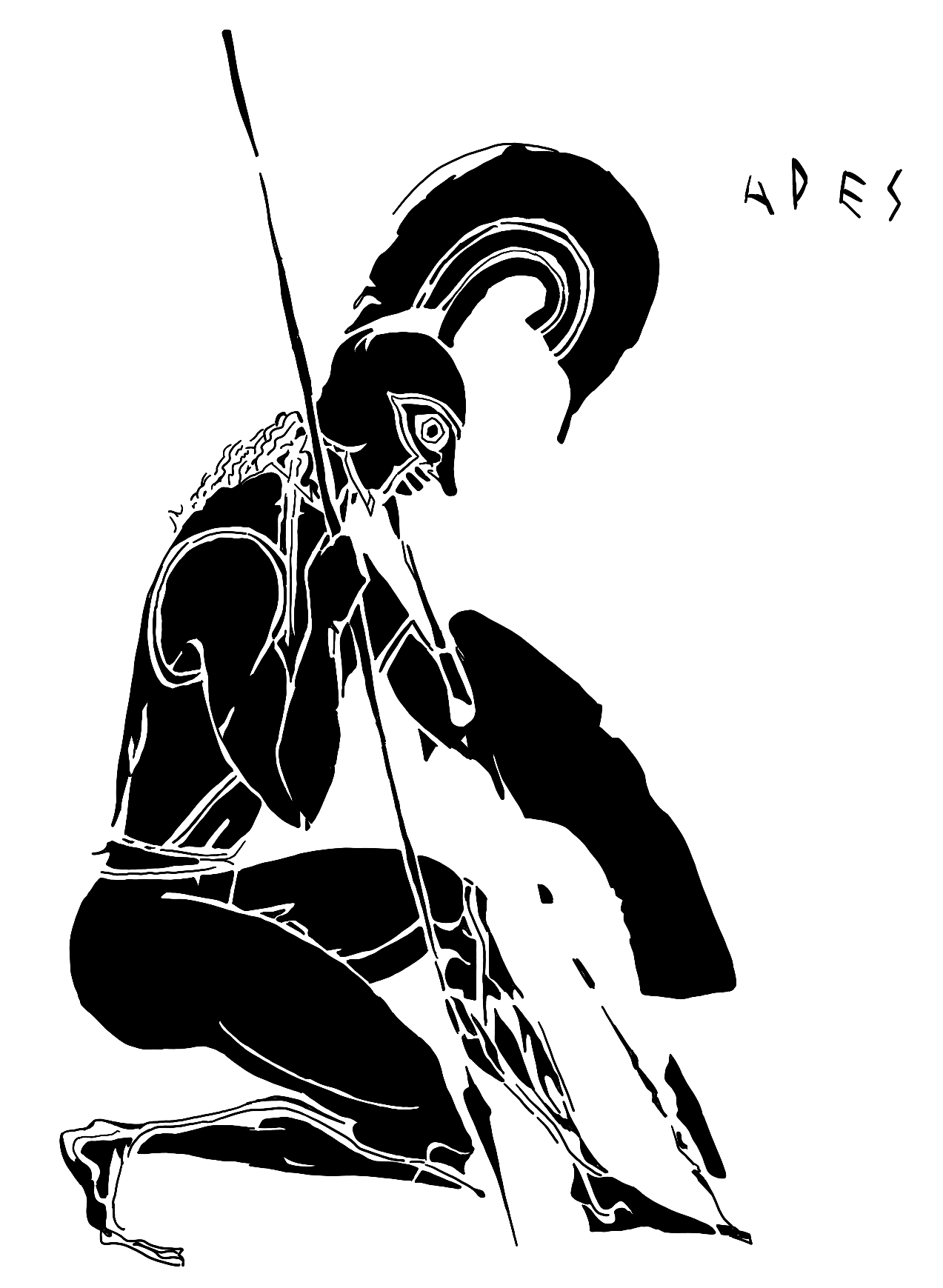
In Greek art, Ares was commonly represented as a fully-armed warrior, wearing hoplite armour composed of helmet, cuirass, greaves, and a large shield.
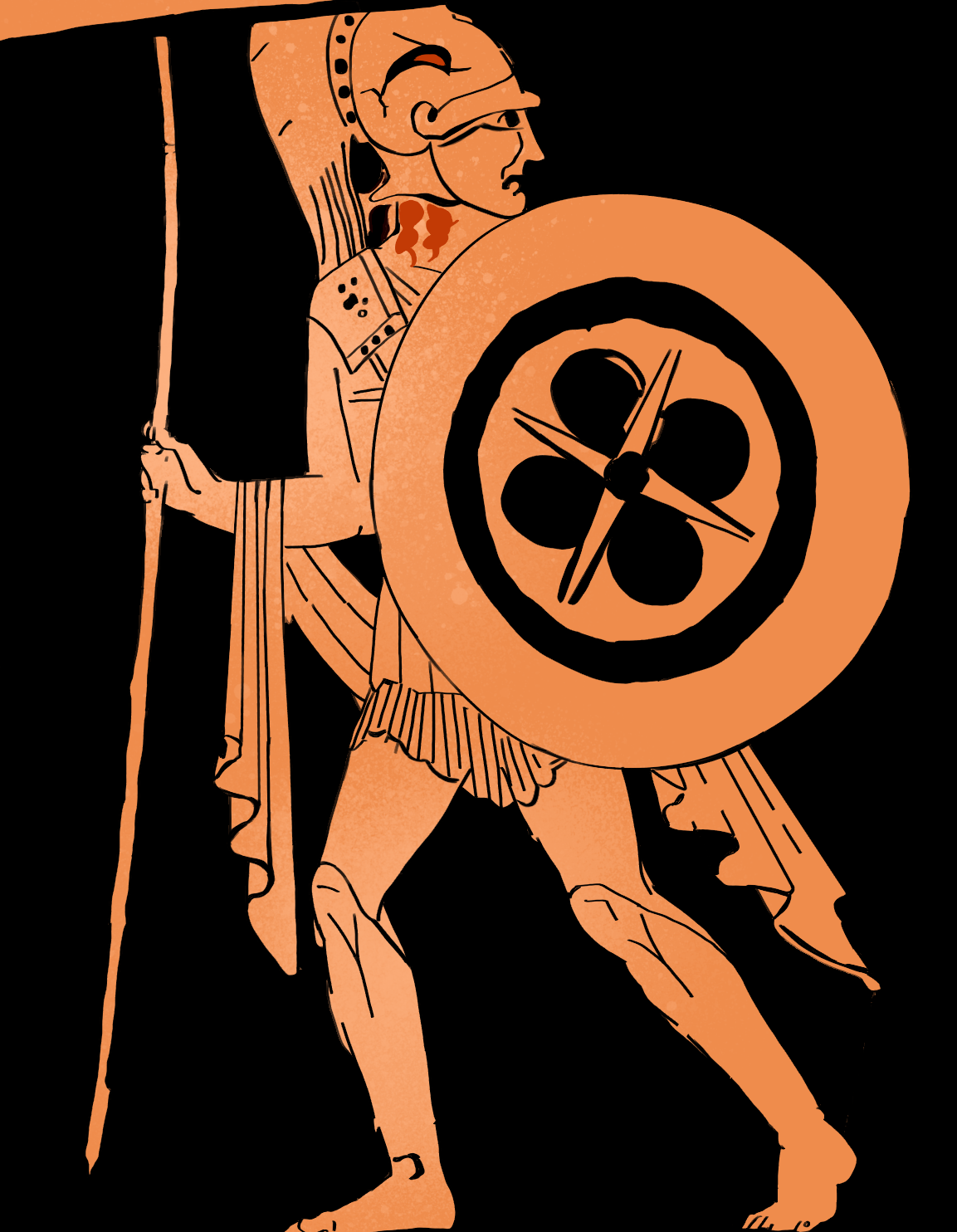
As Ares was feared, his representations on most mediums seem to have been fairly rare until the Hellenistic Period (323-31 BCE). In vase paintings and reliefs, Ares is usually depicted as a member of the assembly of the gods in collective scenes. He rarely appears alone, unlike Athena who is often portrayed solo.
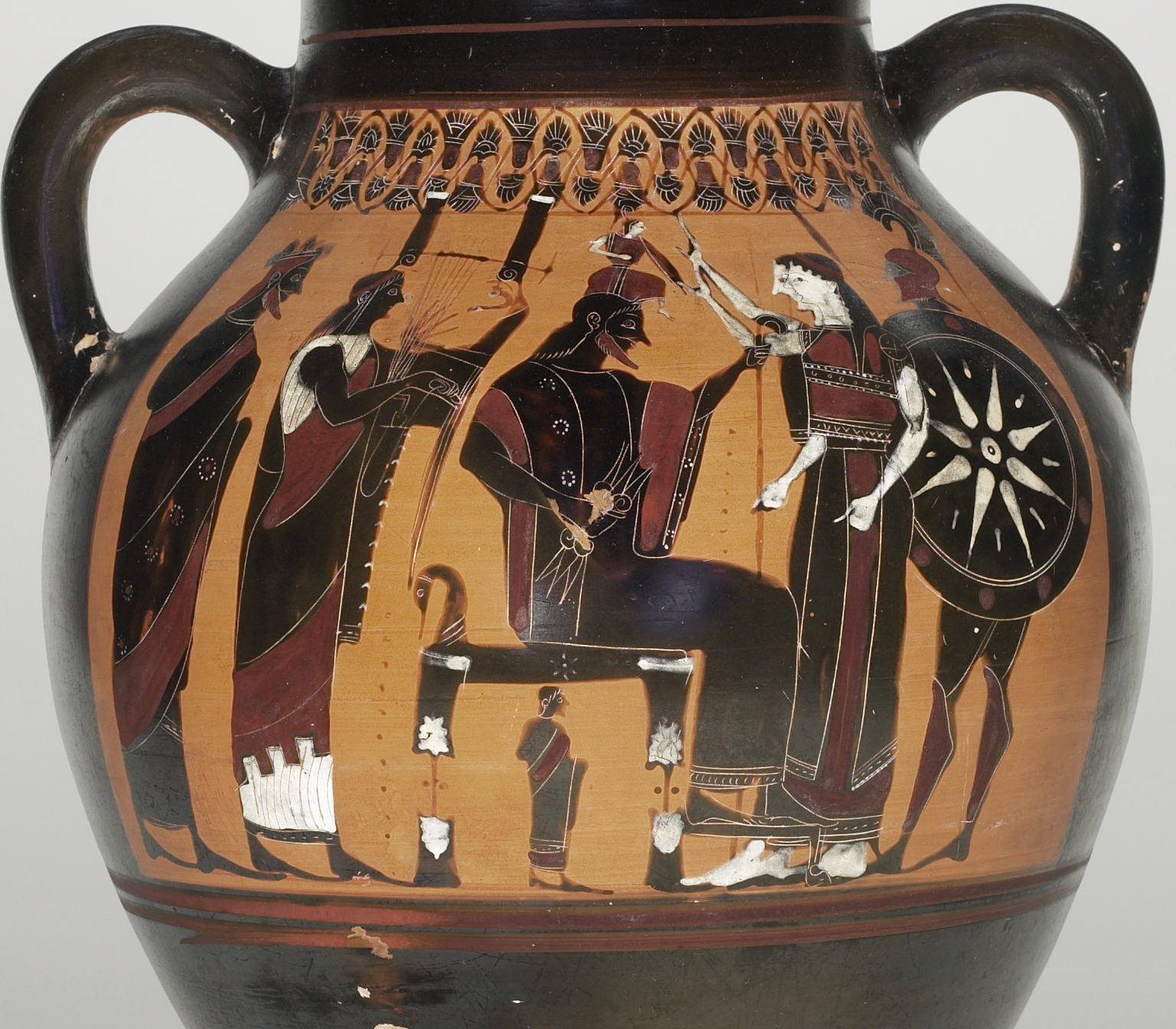
One of the few myths about Ares that is found in art is the killing of his son, Kyknos by Heracles. This scene usually depicts the two combatants flanked by their protectors: Athena on the side of Heracles, and Ares on the side of Kyknos, pitting Athena and Ares conceptually and visually against one another.
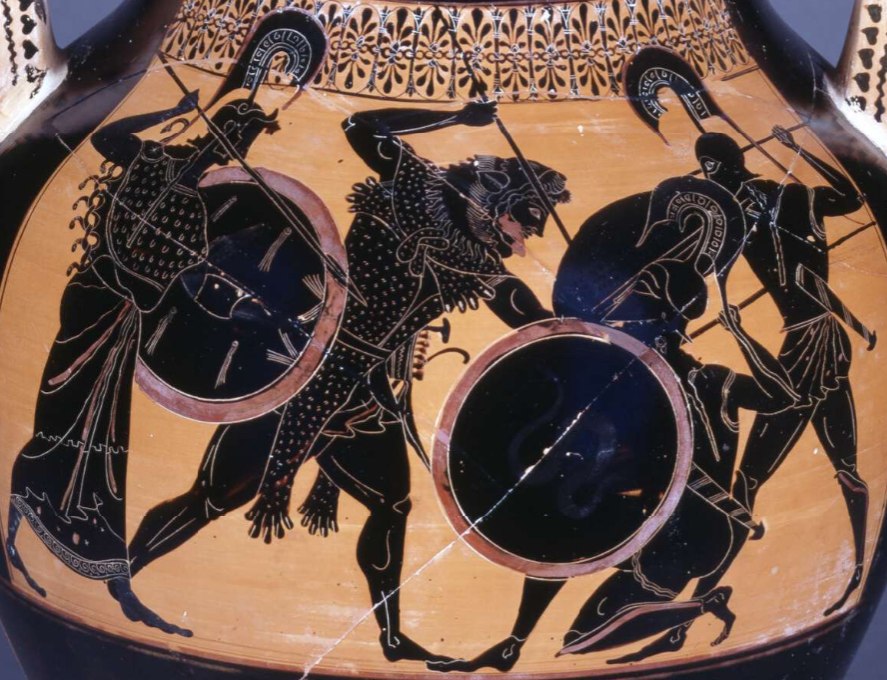
Mars
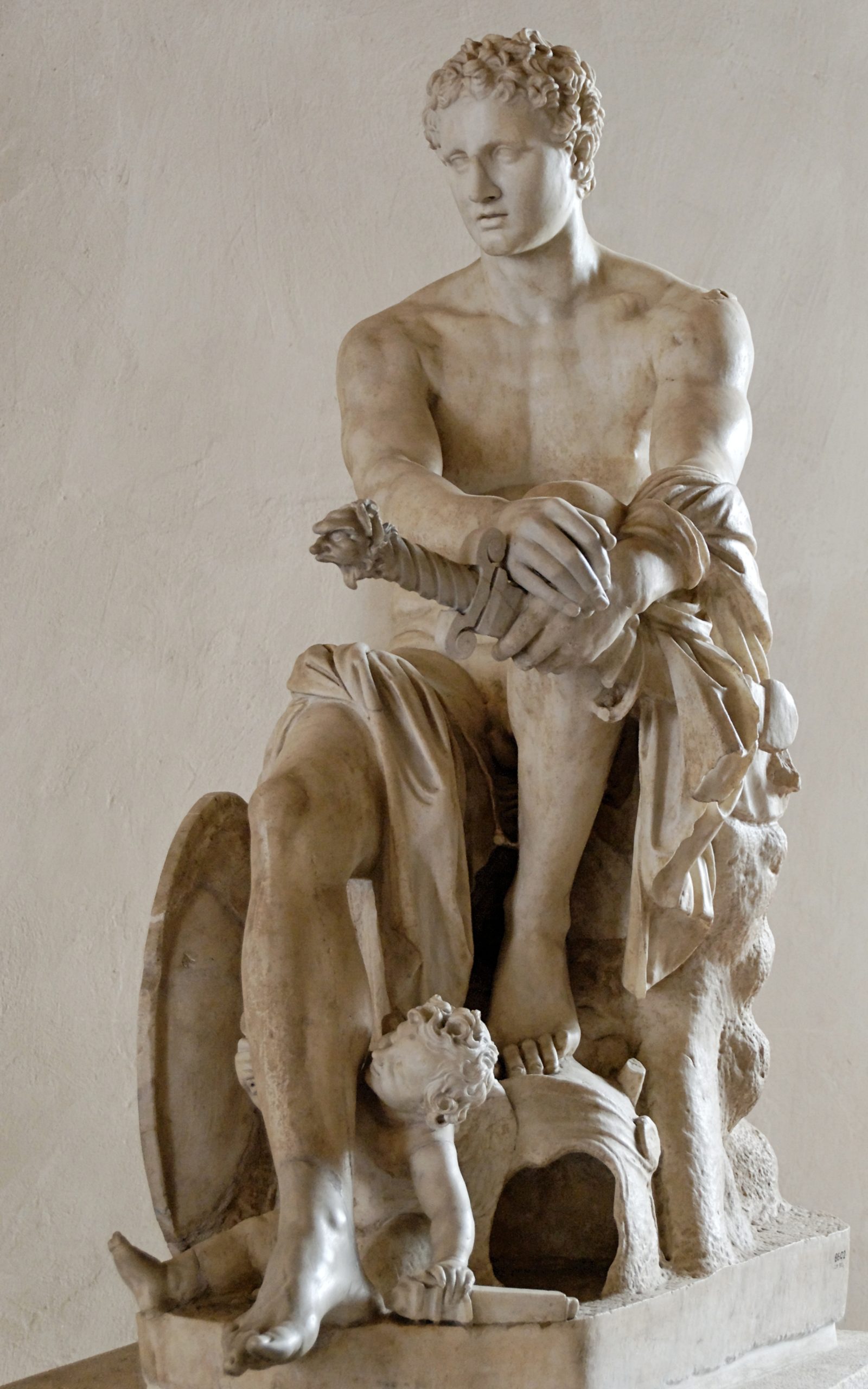
The Roman god Mars, much like his Greek counterpart, was usually depicted as an armed warrior. He could be portrayed either as a naked youth surrounded by his weapons, or as a more mature, bearded man in full armour.
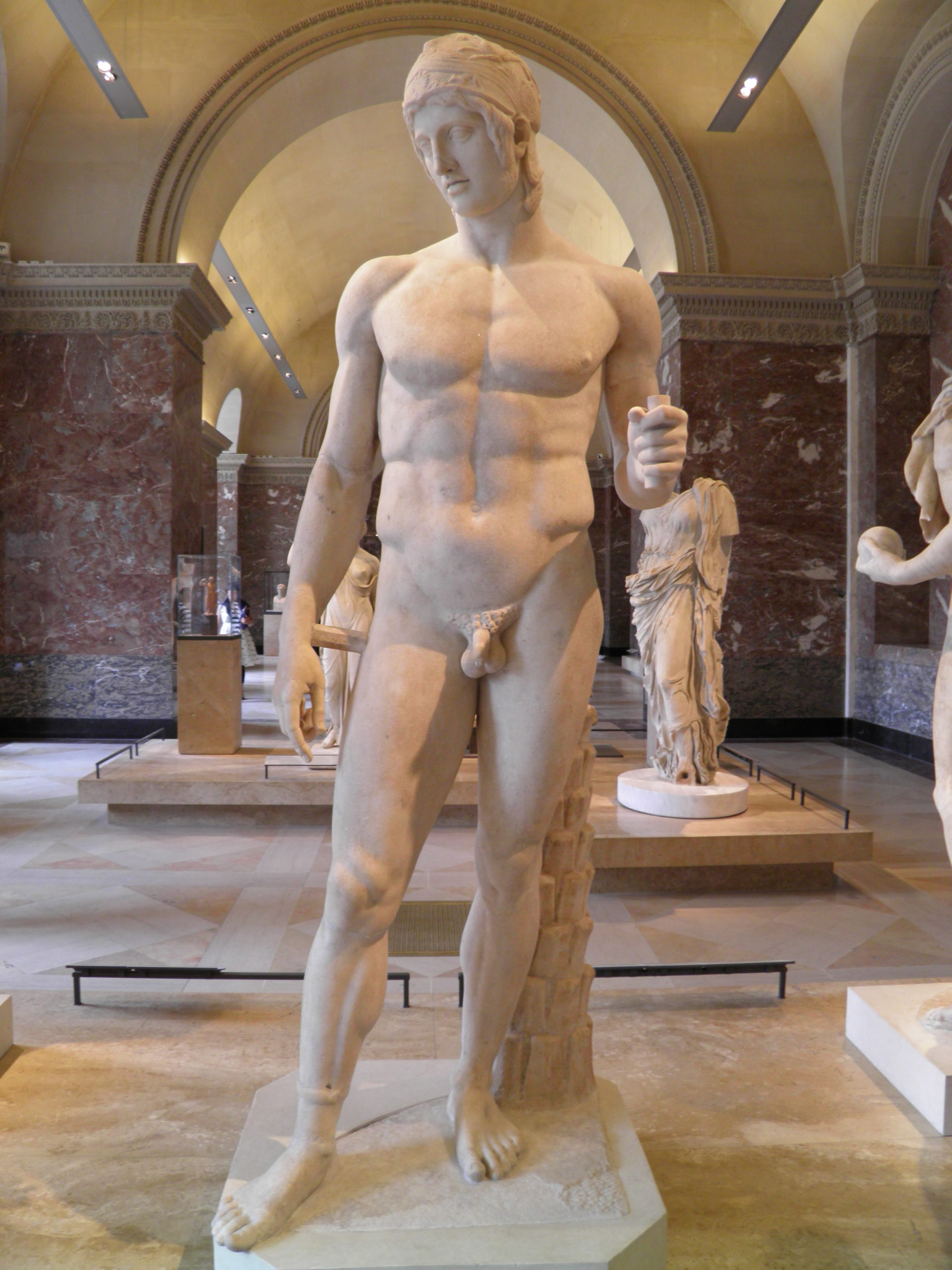
The first iteration of Mars was generally used in depictions of scenes inspired by Greek myth, such as his relationship with Aphrodite/Venus. The second one was employed when referring to Mars as the ancestral god of the city of Rome.
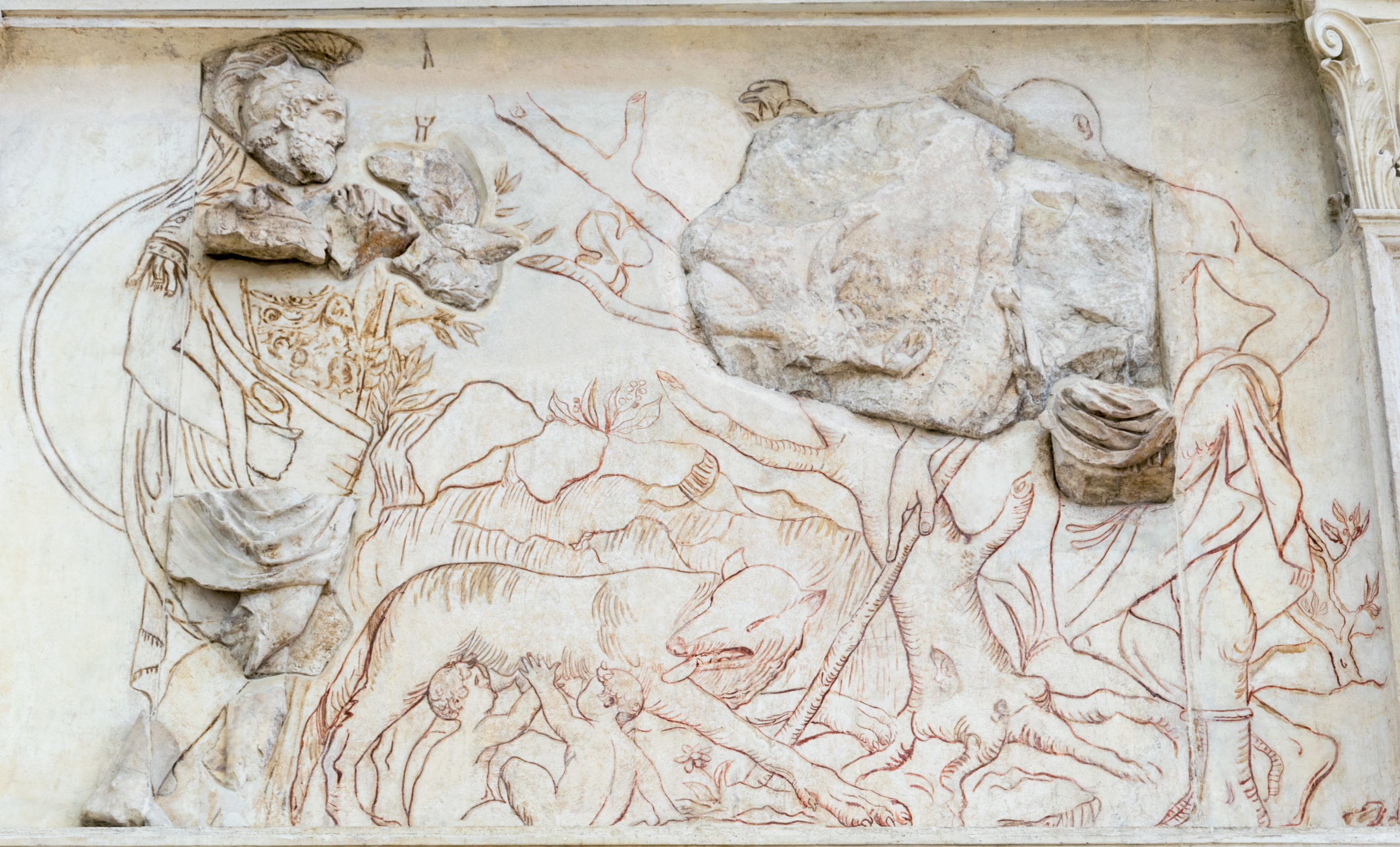
During the Roman Imperial Period (27 BC onwards), some emperors were also portrayed in the guise of Mars to underline their military prowess and to tie them to Rome’s origins.
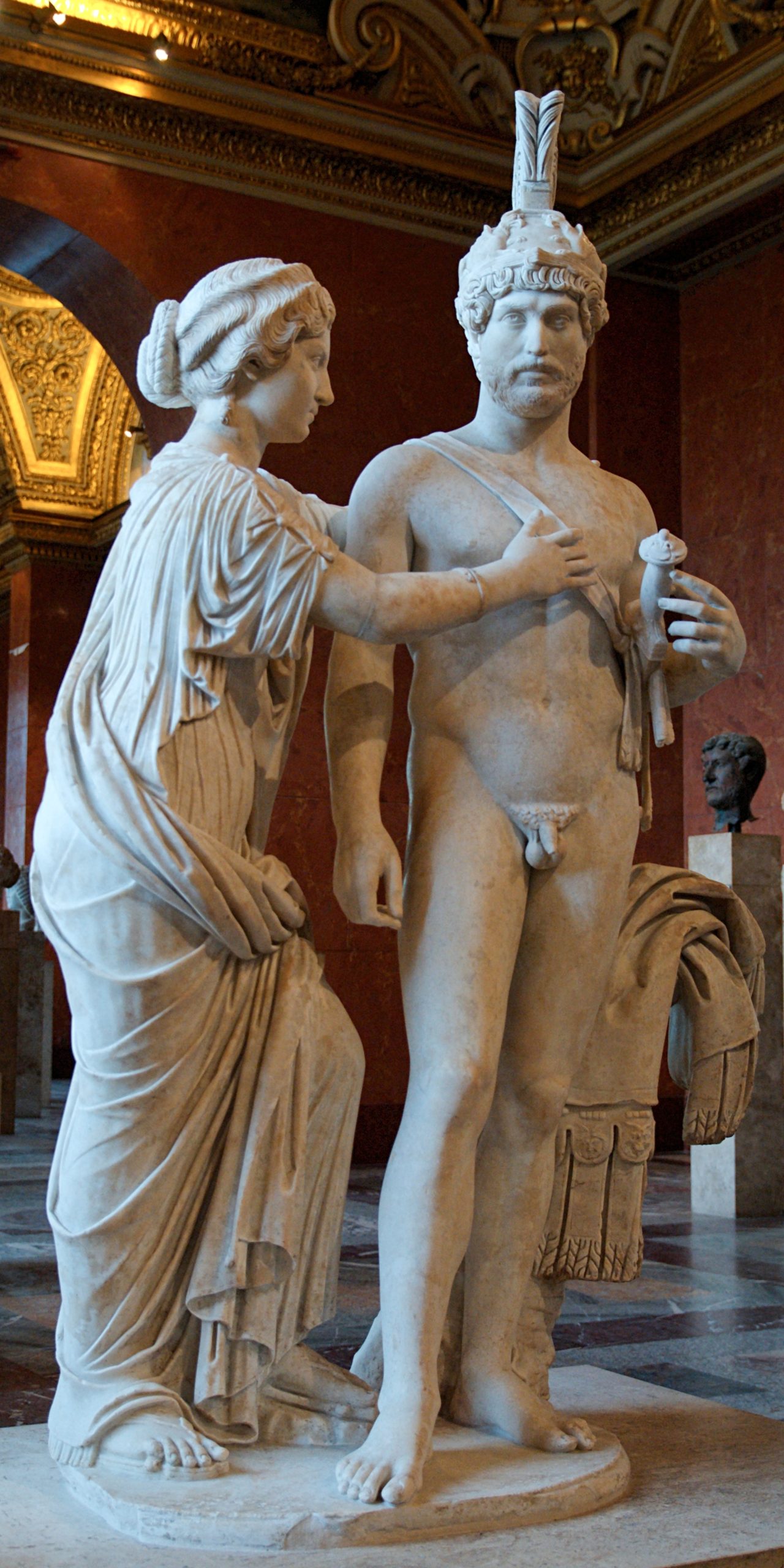
Media Attributions and Footnotes
Media Attributions
- Attic red-figure pelike with a Gigantomachy and youths. SIDE A. About 400 B.C. © George E. Koronaios is licensed under a CC BY-SA (Attribution ShareAlike) license
- Tracing of Ares © Luoyao Zhang is licensed under a CC BY-SA (Attribution ShareAlike) license
- Tracing of Ares at the Creation of Pandora © Luoyao Zhang is licensed under a CC BY-SA (Attribution ShareAlike) license
- Black-Figure Amphora; A: Birth of Athena; B: Frontal Chariot © Yale University Art Gallery is licensed under a Public Domain license
- Amphora © the British Museum is licensed under a CC BY-NC-SA (Attribution NonCommercial ShareAlike) license
- Ares Ludovisi Altemps Inv8602 n2 © Marie-Lan Nguyen is licensed under a Public Domain license
- Mars Borghese (Louvre) © Carrole Raddato is licensed under a CC BY-SA (Attribution ShareAlike) license
- Relief Lupercal © Rabax63 is licensed under a CC BY-SA (Attribution ShareAlike) license
- Imperial group Mars Venus Louvre Ma1009 © Jastrow is licensed under a CC BY (Attribution) license
Region located east of Greece, between present-day Bulgaria and Turkey
Region located east of Thrace, and north of the Black Sea, near present-day Iran.
A mountain in Greece and the mythical home of the gods on this mountain.
Greek: Nike
Roman: Victoria
Personification of victory. Often represented in art alongside another god (particularly Athena) to show their victory.
Titan of justice and order.
Featured in chapter 3.
The upper area of the sky or heavens, or the primordial deity personifying this space.

